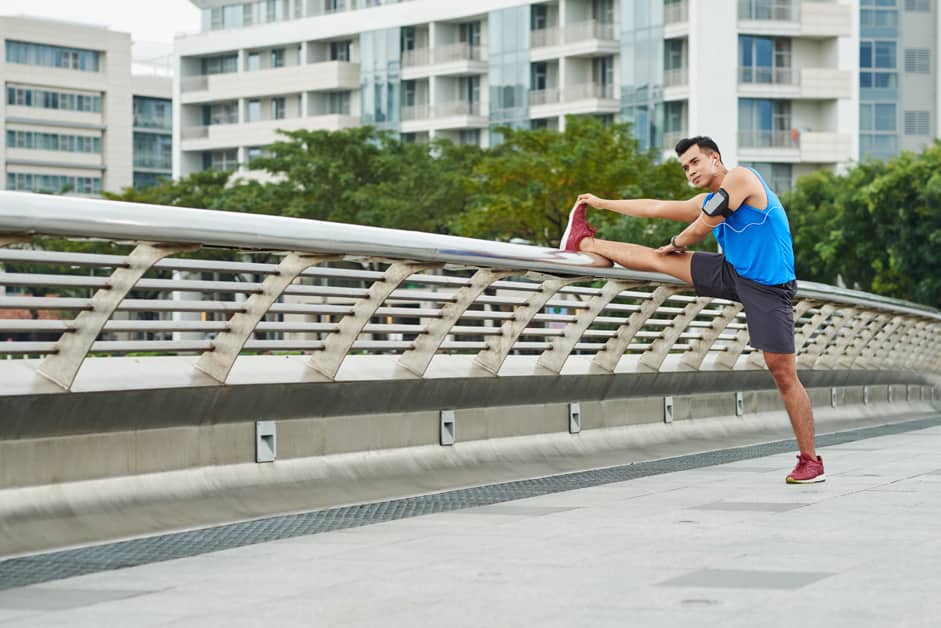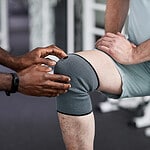Introduction
Pilates is ideal for increasing movement and strength. But if you have knee pain, it can be hard to do. To make your practice comfy, warm-up stretches are essential. In this article, we’ll discuss the advantages of stretching as a warm-up, plus how to do some great stretches for knee pain. Let’s begin!
Benefits of Warm-up Stretches
Warm-up stretches are great for Pilates practitioners with knee pain. They can help reduce the risk of injury or discomfort. Stretching relaxes muscles, increases circulation, and raises temperature. Studies show it reduces strain and soreness.
Benefits of stretching include: more flexibility, better posture, better balance, increased range of motion, improved circulation, and faster recovery after exercise. Also, it reduces stress and tension in the muscles which is important for the knees.
Warm-up stretches should be light but firm. Do slow, controlled movements. Here are some examples:
- Quadricep stretch – With support, push against wall/bar.
- Hamstring stretch – Lie on back, raise legs to ceiling. Gently lower legs until you feel a stretch.
- Calf & Achilles tendon stretch – Stand with feet shoulder width apart. Concentrate on pushing towards wall, no bouncing.
Stretches for Knee Pain
Before Pilates, stretching can help reduce knee pain and make knees more flexible. It’s essential to find a warm-up routine that focuses on the areas around your knees and hips.
Let’s look at some helpful stretches for knee discomfort:
Quadriceps Stretch
The quadriceps stretch is important if you’re feeling knee pain. It helps the front of your thigh to stretch and can increase flexibility. But, if you feel pain, stop.
- Stand at arm’s length from a wall. Bend your left leg, grab it with your left hand, and stretch your quads. Don’t cause any knee pain.
- Hold this for 15-30 seconds, then lower your leg to the floor. Then, switch to your right leg.
- Pay attention and stop if you feel any discomfort in your knee or hip.
Hamstring Stretch
Stretching can help with knee discomfort. A good stretch for this is the hamstring stretch. Sit on the floor, legs out straight and close together, toes flexed towards you. Keep your back and chest up, then slowly walk your hands forward until you feel a mild stretch at the backs of your legs and knees. Hold for 15-30 seconds, then go back to the start. As you get used to it, stretch further by walking your hands until you can’t keep a straight back.
You can also take longer holds of 30-60 seconds or lie on either side between stretches. If there’s sharp pain or it gets worse, stop and talk to a medical expert.
Calf Stretch
Calf stretching is a great way to reduce knee pain and discomfort. This exercise helps keep the calf muscle, which supports the knee joint, flexible. Here’s how to do a basic calf stretch:
- Stand facing a wall. Place your palms on it, at eye level.
- Step back with your right foot. Make sure your heel touches the ground.
- Bend your left knee slowly, until you feel a gentle pull in the back of your calf.
- Hold this stretch for 10-30 seconds. Do this 3-4 times for both legs.
Do this as part of a warm up or cool down routine before or after physical activity. It can help reduce knee pain due to tight calves.
Hip Flexor Stretch
The hip flexor stretch is great for flexibility and mobility in your hips. Plus, it restores balance to the knee joint. Stand with feet wider than shoulder-width apart. Bend one knee at 90 degrees. Keep your back straight and chest up.
Bend forward at the waist. You should feel a gentle stretch in the hip flexor muscle. Keep your stomach tucked in. Hold the stretch for 5-10 deep breaths. Do this on both sides.
This stretch can:
- Reduce pain from tight hip flexors
- Improve posture
- Relieve knee injuries
- Prepare you for physical activities
- Reduce lower back pain
- Alleviate muscle tightness.
Tips for Stretching Safely
Stretch it out! Doing so can reduce knee pain from Pilates. Exercises to increase range, strength, and flexibility are the way to go. But, remember to warm up muscles and joints before stretching. To make sure you stretch safely and effectively, here are some tips:
- Warm up your muscles and joints before stretching.
- Breathe deeply to help relax your muscles.
- Hold each stretch for 15-30 seconds.
- Repeat each stretch 3-5 times.
- Listen to your body and stop if it hurts.
Start Slowly
Before you start any exercise routine, warm up safely and gradually. Start with rolling your shoulders and doing hip circles for a few minutes. This helps muscles prepare for stretching.
Do stretches slowly and move into the stretch deeper as the muscle warms and loosens. No sudden movements! Following proper warm-up technique helps avoid tightness or injury.
Kneeling or lying down on the floor? Use a foam mat or thick padding to cushion sensitive joints like knees and elbows. If it hurts, stop and get medical help.
Listen to Your Body
When it comes to Pilates and knee injuries, always heed your body’s advice. Don’t do something if it doesn’t feel right. Poses can bring relief to your knee pain in the long term, yet they can also hurt you if done incorrectly or carelessly. Make sure to learn how to properly perform a pose before attempting it.
When stretching, no pain should be felt. Pain is your body’s way of telling you something’s wrong. Even though you may feel discomfort during a stretch, just keep breathing and being mindful. Stretching beyond your body’s limits can lead to injuries and more pain.
To stay safe during your pilates practice, take care of your body by following these rules:
- Warm up with low intensity stretching or light cardio activity; like a short jog or bike ride
- Progress gradually; don’t attempt what you can’t handle
- Don’t force your body into any movements; pay attention to body cues
- Inhale and exhale deeply while stretching; utilize this breathwork as a mindfulness anchor
- Be aware of all sensations arising during each pose; don’t overexert your muscles
- Conclude with static stretches when muscles are warm; focus on areas with tension built up during the workout.
Don’t Push Too Hard
Stretching is important, but don’t go too far. Take it slow and gradually become more flexible. Pushing too hard can cause tears. This means long recovery periods. When increasing intensity, do so gradually to avoid injury. Never stretch to the point of sharp pain. That’s a sign you’re stretching too fast or you’re at a higher risk for injury.
Listen to your body. If a stretch is doing more harm than good, move on. This could lead to increased tension and soreness. Be aware and maintain control of each movement. If pushing beyond a comfortable level is needed for therapy, consult experienced professionals for help with stretching safely.
Conclusion
To sum up, the optimal warm-up stretches for Pilates lovers with knee ache are:
- Standing quadriceps stretch
- Standing forward bend
- Kneeling lunge
These stretches will help relax hard muscles, boost flexibility and decrease knee pain. Doing these stretches routinely and concentrating on accurate form and technique will aid you in executing Pilates exercises securely and prevent additional knee agony.
Summary of Benefits
Coffee roasting is both an art and a science. You can personalize your perfect roast by understanding the four categories: light, medium, medium-dark, and dark.
- Light roasts will give you a milder coffee.
- Dark and medium-dark roasts will add more flavor to the cup. Plus, light roast coffees may have higher caffeine levels.
Choose whichever roast brings you joy in every sip!
Frequently Asked Questions
Q: What kind of warm-up stretches should Pilates practitioners with knee pain do?
A: It is important for Pilates practitioners with knee pain to perform warm-up stretches to reduce the risk of injury. Gentle stretches such as hip circles, ankle circles and knee circles can help to improve flexibility, range of motion and reduce tension in the knee joint.
Q: How often should Pilates practitioners with knee pain do warm-up stretches?
A: Pilates practitioners with knee pain should perform warm-up stretches 2-3 times a week. It is important to take breaks between stretching sessions to allow the muscles and joints to rest.
Q: Are there any additional tips for Pilates practitioners with knee pain?
A: Pilates practitioners with knee pain should always consult with a medical professional before beginning any stretching routine. Additionally, it is important to perform the exercises slowly and carefully, with proper form and alignment, to reduce the risk of further injury.





